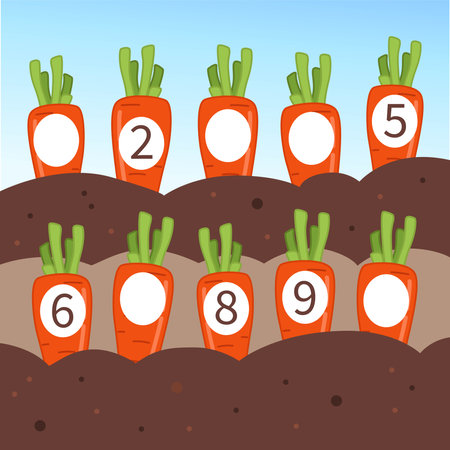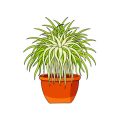1. Benefits of Raised Beds and Containers in American Gardens
Raised beds and container gardening have become increasingly popular in home landscaping across the United States, especially in urban and suburban areas. Whether youre working with a small backyard, a patio, or even a balcony, these methods offer practical solutions for growing flowers, herbs, and vegetables. Let’s take a closer look at why so many American gardeners are choosing raised beds and containers as part of their garden layout.
Improved Soil Control
One of the biggest advantages of raised beds and containers is the ability to control your soil quality. Many areas in the U.S. have poor native soil—whether it’s heavy clay, sandy, or compacted—which can make traditional gardening difficult. With raised beds and containers, you can fill them with a custom soil mix that drains well and has the nutrients your plants need to thrive.
Better Accessibility
Gardening should be enjoyable for everyone, regardless of age or physical ability. Raised beds can be built at different heights to reduce bending and kneeling, making them ideal for older adults or anyone with mobility issues. Similarly, container gardens placed on tables or stands allow for easy access while standing or sitting.
Space-Saving Solutions
In many American cities and suburbs, outdoor space is limited. Container gardening is perfect for patios, balconies, and small yards because it lets you grow vertically or tuck pots into tight spaces. Raised beds help organize your garden area efficiently by defining growing zones and improving pathways between plantings.
Comparison Table: Raised Beds vs. Containers
| Feature | Raised Beds | Containers |
|---|---|---|
| Soil Control | Excellent – large area allows for deep soil layering | Excellent – ideal for specific plant needs |
| Accessibility | Adjustable height for comfort | Easily movable to fit user needs |
| Space Usage | Efficient use of yard space | Perfect for tight or vertical spaces |
| Mobility | Fixed location once installed | Portable; can be rearranged as needed |
Tip:
If youre new to gardening or dealing with limited space, start with a few containers on your porch or deck. Its an easy way to get growing without needing much setup or space.
Whether youre aiming for a full vegetable garden or just want to add some color to your outdoor area, raised beds and containers are flexible tools that make gardening more accessible and successful in diverse American landscapes.
2. Choosing the Right Location and Materials
When youre adding raised beds or container gardens to your outdoor space, picking the right spot and using the right materials can make a big difference. Whether you’re working with a spacious backyard or a small urban patio, heres how to choose wisely for success in different American climates.
Finding the Best Spot
Start by observing your space throughout the day. Most vegetables and herbs need at least 6-8 hours of direct sunlight daily. Choose a location that gets plenty of sun, has good air circulation, and is easy to access for watering and harvesting. Avoid low spots where water tends to collect after rain.
Ideal Locations Based on Yard Type:
| Yard Type | Recommended Location |
|---|---|
| Backyard (full sun) | South-facing areas with level ground |
| Small yard or side yard | Along fences or near walls that get afternoon sun |
| Patio or balcony | Near railings or open areas with maximum sunlight exposure |
Selecting Durable, Local Materials
Your choice of materials for raised beds and containers will affect both durability and plant health. In the U.S., many gardeners use regionally available wood, recycled materials, or weather-resistant composites. Always avoid treated wood containing harmful chemicals unless it’s certified safe for food production.
Common Raised Bed Materials:
| Material | Pros | Cons |
|---|---|---|
| Cedar or Redwood (West Coast) | Naturally rot-resistant, long-lasting | More expensive than other options |
| Pine with non-toxic sealant (Nationwide) | Affordable and widely available | Shorter lifespan without treatment |
| Recycled composite boards (Urban/Suburban areas) | Durable, low maintenance | Higher upfront cost |
| Cinder blocks or bricks (Southeast/Southwest) | Heat-tolerant, sturdy in windy regions | Heavier and less flexible to move |
Choosing Containers That Work for You
If youre going with container gardening, consider size, drainage, and material. Large containers allow roots to grow better and retain moisture longer—especially important in hot American summers. Make sure there are holes at the bottom for drainage to prevent root rot.
Popular Container Options:
| Container Type | Best For | Notes |
|---|---|---|
| Ceramic pots | Herbs and flowers on patios or balconies | Add beauty but may crack in freezing temps |
| Fabric grow bags | Urban gardens with limited space | Lightweight, breathable, great for root health |
| Plastic planters (BPA-free) | Lettuce, tomatoes, peppers in any region | Affordable and easy to move; look for UV-resistant types |
| Troughs or repurposed tubs | Larger crops like potatoes or carrots | Add drainage holes before use; check for food-safe labels |
Selecting the right location and materials can help your garden thrive while keeping maintenance low. Think about your local climate, available sunlight, and what resources are readily accessible in your area as you plan your layout.
![]()
3. Designing for Aesthetics and Functionality
When incorporating raised beds and container gardening into your garden layout, it’s important to think beyond just where things will grow. Your garden should be a space that looks great and works well too. Raised beds and containers can help you achieve both beauty and practicality if used thoughtfully.
Balance Beauty with Practical Use
Raised beds and containers come in many shapes, sizes, and materials. Choose styles that complement your home’s architecture or reflect your personal taste. For example, wooden raised beds offer a classic, natural look, while galvanized metal gives a modern edge.
Here are some common materials and their visual impact:
| Material | Style/Look | Best For |
|---|---|---|
| Wood (Cedar or Redwood) | Natural, rustic | Cottage gardens, traditional homes |
| Metal (Galvanized Steel) | Sleek, modern | Contemporary spaces, urban gardens |
| Stone or Brick | Sturdy, classic | Formal gardens, historic homes |
| Recycled Materials | Creative, eco-friendly | DIY lovers, sustainable gardens |
Create Flow and Structure
Use raised beds and containers to define pathways and zones in your garden. This adds structure while keeping foot traffic away from growing areas. Try aligning raised beds along walkways or placing containers at corners to guide movement naturally through the space.
A few layout ideas:
- L-shaped beds: Great for corners and maximizing planting space.
- Symmetrical patterns: Offer a formal look thats pleasing to the eye.
- Clustered containers: Grouping pots of various heights adds visual interest and allows microclimates for different plants.
Keep Maintenance in Mind
Your garden should be easy to care for so you can spend more time enjoying it. Position raised beds so all areas are within arm’s reach—about 3 to 4 feet wide is ideal. Choose container sizes appropriate for the plants you’re growing; larger containers hold moisture longer and reduce how often you need to water.
Pro Tip:
Add mulch around your raised beds or beneath container groupings to suppress weeds and give the area a clean, finished appearance.
Encourage Healthy Plant Growth
The right placement of your raised beds and containers also helps plants thrive. Consider sunlight when planning layout—most vegetables need at least 6 hours of sun per day. Place taller containers or trellised plants on the north side so they don’t shade out shorter ones.
Quick Sunlight Planning Guide:
| Plant Type | Sun Needs | Placement Tips |
|---|---|---|
| Tomatoes, Peppers, Squash | Full Sun (6+ hrs) | Southern exposure, open areas |
| Lettuce, Spinach, Kale | Partial Sun (4–6 hrs) | Dappled light or eastern side of structures |
| Herbs (Mint, Chives) | Partial to Full Sun | Near kitchen or patio for easy access |
A well-designed garden layout using raised beds and containers will not only look beautiful but also make gardening easier and more enjoyable every season.
4. Soil, Drainage, and Watering Strategies
When incorporating raised beds and container gardening into your layout, getting the soil mix, drainage, and watering right is key to growing healthy plants. Unlike in-ground gardens, raised beds and containers don’t benefit as much from natural soil ecosystems or groundwater, so you’ll need to create the right environment from scratch—especially considering the wide range of climates across U.S. USDA zones.
Choosing the Right Soil Mix
Raised beds and containers require light, well-draining soil with enough organic matter to retain moisture without becoming soggy. A typical mix includes a combination of topsoil, compost, and aeration materials like perlite or coarse sand.
Recommended Soil Mix Ratios
| Component | Purpose | Suggested Ratio |
|---|---|---|
| Topsoil | Base structure and nutrients | 40% |
| Compost | Nutrient boost and moisture retention | 40% |
| Perlite or Coarse Sand | Improves drainage and airflow | 20% |
Drainage Tips for Containers and Raised Beds
Poor drainage can lead to root rot and other plant diseases. Here are some strategies to make sure excess water doesn’t become a problem:
- Use containers with drainage holes: Always choose pots with one or more holes at the bottom.
- Add a drainage layer: Place a few inches of gravel or broken clay pots at the bottom of large containers for better flow.
- Avoid compacted soil: Fluff your mix before planting to prevent waterlogging.
- Slightly elevate beds: Place raised beds on bricks or wooden supports if possible to enhance drainage underneath.
Adapting Watering Methods to USDA Zones
The climate in your USDA zone will affect how often and how much you need to water. Heres a quick guide tailored to general U.S. regions:
Watering by Climate Zone
| USDA Zone / Region | Climate Type | Watering Strategy |
|---|---|---|
| Zones 3–5 (North/Northeast) | Cooler temperatures, shorter growing seasons | Irrigate early in the day; reduce frequency during cool spells. |
| Zones 6–7 (Midwest/Mid-Atlantic) | Mild weather with moderate rainfall | Check soil moisture regularly; mulch to conserve water. |
| Zones 8–9 (South/Southeast) | Hot and humid summers | Irrigate deeply 2–3 times weekly; avoid watering foliage. |
| Zones 10–11 (Southwest/California) | Drier climates with minimal rainfall | Use drip irrigation or soaker hoses daily during dry months. |
Tips for Efficient Water Use
- Add mulch: A layer of straw, shredded bark, or leaves helps retain moisture in both beds and containers.
- Avoid overhead watering: Water directly at the base of plants to reduce evaporation and disease risk.
- Monitor soil moisture: Use a finger test or inexpensive soil moisture meters to avoid overwatering.
By customizing your soil mix and drainage setup based on your local climate and garden type, you set your raised beds and containers up for success throughout the growing season.
5. Plant Selection and Seasonal Planning
When incorporating raised beds and container gardening into your layout, selecting the right plants and planning for the seasons are key to a thriving garden. Whether youre growing vegetables, herbs, or flowers, understanding which plants do well in these setups and when to grow them will help you get the most out of your space—no matter where you live in North America.
Choosing Plants for Raised Beds and Containers
Raised beds and containers offer great control over soil quality, drainage, and placement. This makes them ideal for many types of plants. Here are some popular choices that thrive in these settings:
Vegetables
- Tomatoes – Prefer deep containers or raised beds with support cages.
- Lettuce & Spinach – Shallow-rooted and perfect for containers; grow quickly in cool weather.
- Peppers – Compact varieties do especially well in pots.
- Carrots & Radishes – Do best in deep, loose soil like that found in raised beds.
Herbs
- Basil – Thrives in warm conditions; perfect for sunny patios.
- Thyme & Oregano – Low-maintenance and great for small containers.
- Mint – Spreads easily, so it’s best grown in its own pot.
Flowers
- Marigolds – Great companion plant that deters pests; does well in containers.
- Nasturtiums – Edible flowers that add color and attract pollinators.
- Pansies – Cold-tolerant blooms that work nicely during spring and fall.
Seasonal Crop Planning by Region
The U.S. is divided into different USDA Hardiness Zones. Knowing your zone helps determine the best planting times. Here’s a simplified seasonal planting guide based on common regional groupings:
| Region | Spring Crops (Mar-May) | Summer Crops (Jun-Aug) | Fall Crops (Sep-Nov) |
|---|---|---|---|
| Northeast & Midwest (Zones 3-6) | Lettuce, Peas, Radishes | Tomatoes, Peppers, Cucumbers | Kale, Broccoli, Spinach |
| Southeast (Zones 7-9) | Cabbage, Carrots, Beets | Okra, Sweet Potatoes, Melons | Lettuce, Turnips, Collards |
| Southwest (Zones 8-10) | Kale, Swiss Chard, Herbs | Chilies, Eggplants, Beans | Lettuce, Arugula, Carrots |
| Pacific Northwest (Zones 6-9) | Bok Choy, Spinach, Peas | Zucchini, Tomatoes, Corn | Kale, Cabbage, Lettuce |
Tips for Seasonal Rotation and Successive Planting
- Rotate crops each season: Avoid planting the same type of plant in the same spot to prevent soil depletion and reduce pest issues.
- Add compost between seasons: Refresh your soil mix with organic matter to keep it nutrient-rich.
- Start seeds indoors: Especially helpful for northern gardeners who want a head start on summer crops like tomatoes and peppers.
- Select dwarf or patio varieties: These are bred specifically for small spaces and produce well in containers.
By understanding what grows best where you live—and when—you’ll be able to design a productive garden using raised beds and containers that keeps producing from early spring through late fall.


